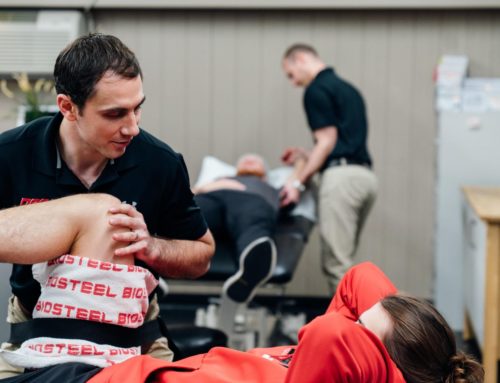As gym’s start to re-open, a lot of people once again starting to think about their fitness goals. The last year has been a major challenge for most of us and during that time some of us have put exercise and nutrition on the back burner. With this in mind, a lot of people are seeking a quick fix to get them back on track with their goal, but when it comes to forming habits, a slow and sustainable approach is better in the long run.
If we use weight loss as an example, it can be quite easy to follow a detailed meal plan for a couple of weeks that restricts calories and follows a specific macronutrient count and you will likely see great results! Some people can sustain this for a long time, but for most of us we are back to square one with nutrition once our motivation dwindles.
Instead of focusing on the details, try building one attainable habit at a time. Here are a few suggestions to start with:
Eat Slowly
One of the most important habits you can begin with on your nutrition journey is eating slowly. This tactic allows the delayed signal from your stomach to actually reach your brain before you finish eating, letting it know that you are full. The beauty of this approach is that it doesn’t actually matter what you are eating to begin with, as long as you are eating it slowly.
Eating slowly will also help you to be more mindful during your meals. Take time to chew and think about how your food tastes and whether or not you actually enjoy what you are eating. Sit down at your dinner table with your family and enjoy some conversation instead of eating in front of the television. Set down your fork and have a sip of water between bites to help slow yourself down. Whatever approach you take to slow down your eating, it should result in feeling more full and satisfied sooner which is where our next habit comes in.
Eat Until Satisfied (Or 80% Full)
While eating slow allows us to feel full sooner, it’s a skill in its own right to be able to recognize this feeling. Distractions and habits we’ve created over time make it hard to tune in to how we are actually feeling when we eat. Maybe you had a big family and growing up you had to fight for every last scrap of food and made sure you cleaned your plate during each meal. Or maybe you settle down in front of the TV for dinner each night and all of a sudden your meal is finished. Taking the time to check in and see how full you are feeling can make a big difference.
The 80% mark is hard to determine. It’s usually right around the point where you feel like you could take a few more bites because it tastes good. but you would feel “stuffed” if you did. You may feel hungry for a few minutes but that feeling will soon be replaced by satisfaction. Overall this should lead to consuming less calories without having to think about measuring them in a calorie restrictive diet.
—
When using a habit based approach to change make sure you outline what success is to you. If you are starting off by eating slowly, success might mean completing your habit at dinner 4/7 days of the week. As you become better and more consistent with it, continue your old habit while adding in a new practice. Through your journey, your habits can become more complex and focussed on details as long as you continue to practice the skills you built at the start. This isn’t meant to be a quick fix and it will require an open mind, but over time you’ll build the life long skills required to eat healthy consistently and sustainably.
Have questions about where to start with your nutrition? Kerrie, Gabbie and Mitch are certified Precision Nutrition coaches and would be happy to help!
Written by: Mitch Grant, Personal Trainer & Nutrition Coach






